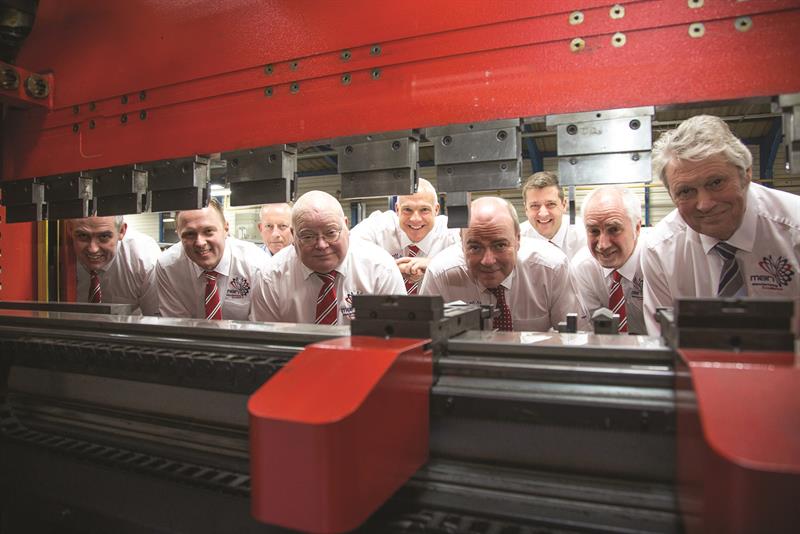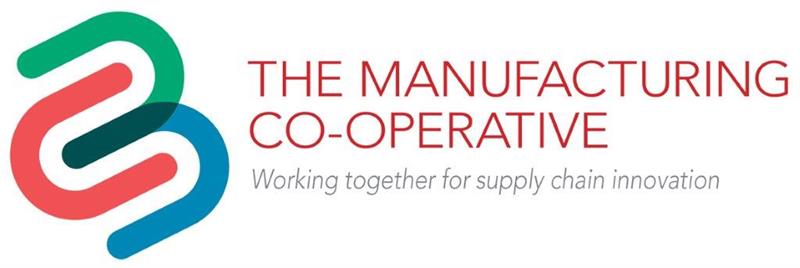A geographical concentration of firms in the same or related industries is called a ‘cluster’ – the ceramics industry around Stoke in North Staffordshire, or financial services industry in London, would be UK examples, according to Dr Phil Tomlinson, associate professor in business economics at the University of Bath’s school of management.
He continues: “It is often felt that being close to other firms develops specialist capabilities. All the firms in the district are in close proximity, and some may have face-to-face contact, which can lead to an exchange of ideas and knowledge, and that is termed ‘local buzz’. Clusters, where they thrive, have good industry associations, a good pool of skilled workers, good links with universities and public research bodies. They act as conduits to bring a network together and foster experimentation, new ideas, innovation. But just because the same industry is co-located doesn’t mean that they will have a great dynamic. It is all about making the conditions right, and the relationships between the firms in the cluster; the buzz has to be there.”
The Coventry & Warwickshire Aerospace Forum (CWAF) is just such an organisation; established in 2008, it is a “mature aerospace cluster”, according to chairman Jason Aldridge. He describes the 12-company set-up’s purpose: “This isn’t really about trying to win each other work. It is more that the aerospace industry is a really difficult industry and how can we help each other in it. Some of our competitors are so big, and they’re from all over the world, and they have help. Look at the clusters in Toulouse; look at the clusters in Singapore. They’ve got massive government help. We get our tax credits, plus a little bit of help from the Coventry City Council, and we’ve got a Catapult centre [the MTC, one of the government’s high value manufacturing R&D centres]. I’m not saying we don’t have any help, but we still need more, so what we do is work together to try to give us that boost.” Aldridge is also managing director of subcontract machinists Arrowsmith Engineering.

Midlands Assembly Network members, with chairman Tony Hague seen here at the back,
in the middle
Tony Hague, chairman of another well-established cooperative group, the 10-year-old Midlands Assembly Network (MAN) that boasts 10 organisations, explains that being a member offers two kinds of benefits: “One is what I call the soft benefits: sharing best practice, having people to talk to within your group, sharing ideas. Being the MD of a company can be a lonely place sometimes. It’s a good support mechanism.” Hague is managing director of PP Control and Automation.
HOW TO MAKE MONEY
The second benefit is commercial advantage, as he continues: “The reason we invest as much time as we can in developing MAN is because, like any investment, we can see a return. At PP, one of our largest customers that we have right now is a direct result of being part of the MAN group. If we hadn’t been, we wouldn’t have been at a certain exhibition, we wouldn’t have met a certain company, for whom we’ve done many millions of pounds’ worth of business, and it’s continuing to grow.”
As for generating business, both MAN and CWAF work collectively on contracts within their own groups (but not between them; MAN and CWAF are completely independent). If a large order comes in, the most suitable member, based on the type of work required, will take the lead, and may delegate elements to other members in a miniature supply chain. In CWAF, member companies are considered alongside external contacts, although giving work to other members is not mandatory. In MAN, the supply links are a little looser. Hague says that other MAN group members will only be considered if they “are right from a quality, delivery and cost point of view. One thing we say is that no-one has a divine right for business. You don’t join MAN on the basis that you want business from the other members. If you get some, that’s a bonus”.
MAN group members benefit by sharing introductions; when making a customer call, each member’s sales team will introduce other members as appropriate and keep a look out for opportunities – although they receive no financial incentive for doing so. Hague adds that the collective has recently formed sub-groups of three or four members to target business in aerospace, automotive, design/prototyping and machine builders/OEM markets, because the breadth of the group’s offering made it “bewildering” in aggregate.
For CWAF, a focus on a single sector – aerospace – was always an essential element. Aldridge explains: “Aerospace is unique. It is totally and utterly different to automotive, or nuclear. You’re talking to people who fully understand the industry that you’re in. Their requirements are the same; the direction is the same.”
Grouping together like-minded peers who share an aerospace culture has raised the bar all around. He says: “Six of us have got SC21 bronzes; we’re all AS9100 certified. So the group helps us all achieve the best that we can get to. We’re all playing, for our size, at a high level. If you look at Arrowsmith, a £4 million turnover business, we’re a strategic supplier to Rolls-Royce all over the world, we supply Bombardier, Eaton, Safran, Meggitt – companies that, normally, much bigger companies would supply. And we are growing. You can’t say it’s all down to [CWAF], but it gives us confidence to go to some of the bigger customers that wanted to pull away from smaller suppliers.”
Reaching this point was not straightforward, for either cooperative. Both started as local government initiatives: CWAF by Coventry City Council in 2008; MAN by the then-regional development agency Accelerate West Midlands and automotive supply chain initiative Accelerate in 2005. The initial meeting of CWAF attracted 50 local companies and featured a government-funded project manager; the early days of MAN offered match-funding by the government for marketing activities. However, as government support declined, group members faced a crucial decision, both chairmen recall.
Says Aldridge: “There were some big grand ideas at the start, like having a huge membership, all working together, all sharing ideas, and this type of thing. But in reality what happened was you had a core that invested into it. There came out of it 10 companies that could see a genuine link.”
For MAN’s part, Hague recalls: “I always say that the best thing that ever happened to MAN group was the funding stream coming to an end, because then the companies that were interested in developing MAN further as a group were in it for the right reasons; they weren’t in it for potential funding for an exhibition, they were in it because they actually believed in MAN.”

One of the newest collaborative groups in the UK, the Manufacturing Cooperative (www.manufacturing.coop), a government-prompted initiative of Cranfield University’s Operations Excellence Institute, only attracted its first members in August last year. This organisation is a cooperative with a capital C, adhering to the egalitarian structure of social enterprise promotional body UK Cooperatives. It now has 45 members across engineering (KW Special Products, 01280 704768), saw supply (Prosaw, 01536 410999), injection moulding, abrasives, electronics and even software. Membership is open to small-to-medium sized enterprises in the UK (although most are from the Midlands), in good financial health, offering design, production or through-life support for engineering systems.
States CEO Matthew Caffrey: “The aim is to establish a core membership, and ultimately to generate clusters of business in various parts of the UK. We haven’t got that far yet. Ultimately, we are trying to position them to actually win business they would not have normally won. That can be in the form of grants from bodies such as Innovate UK, and we work with them to do that.
The university has lots of experience getting grants, so I can piggyback on that. Also, we can go to some of the larger companies, OEMs and Tier 1s and 2s, and go to them to see if they are willing to work with the cooperative and its members.”
Although it remains early days for the Manufacturing Coop, for both CWAF and MAN there came a time when conflicting companies needed to be weeded out, to minimise inter-group competition. And that was not all it took to create the conditions for success; a personal connection was also necessary. States Hague: “The concept of MAN couldn’t be simpler: you get a group of like-minded, complementary businesses to work together to generate business for each other. The concept is simple; in practice it is hard. Selecting members carefully is also critical, not just for what the member brings in terms of a skill set but does that MD sit well with the other MDs. Do you know, like and trust that person?”
He continues: “With the MAN group, the investment isn’t so much cash-based. Yes, we all put cash into the group and spend back on ourselves. [But] the real investment is time and effort. We have had members in the past who were happy to pay their ‘monthly subscription’, but they were not taking an equal part in terms of the investment of time and effort, and have been asked to leave. They weren’t contributing enough of themselves.”
REGULAR MEETINGS
The managing directors of the member companies of both groups meet regularly. For CWAF, these take the form of an informal two-hour breakfast meeting once every six weeks, during which each offers a report, followed by discussion of shared work, or research, or applications from prospective new members. For MAN, meetings are monthly and last all day. There is a formal agenda to discuss business strategy “and everything that goes with it” as Hague says, plus a presentation from MAN’s academic member, the University of Warwick’s Warwick Manufacturing Group. Although that member doesn’t win MAN any business, its perspective is essential to the group’s success. Hague states: “It has a really important role in helping connect us into potentially emerging markets and being aware of new technologies, new processes. They’re looking at the horizon, whereas we’re looking at the coal face too often.” (CWAF also works with a technical partner, the MTC, a Catapult, but on a project basis).
To help build up trust among members of the Manufacturing Co-op, Caffrey organises members’ meetings, occurring at least every three months, which also feature presentations about services at Cranfield University. He adds: “We are trying to engage with the members and are holding regular meetings with them, so they can get to know each other. The more they meet and get to talk with one another, the better. And within the meetings, people are being open about their issues and problems. That is refreshing and it demonstrates a level of trust.”
Aldridge concludes: “Because we all know the managing directors well, we can pick up the phone and make a call. If one of our machines is down, if a CMM is down, we’ll go borrow one from a friend around the corner. And this happens all the time; these are the things we do for each other.”
Coventry & Warwickshire Aerospace Forum
Members: Abbey Metal Finishing Company, Act On Finishing, AES, ANT Industries, Arrowsmith, Bodycote, CFS Aero, Harris RCS Precision Engineers, JJ Churchill Precision Engineering, PowerKut, Precision Laser Processing, Technoset
Midlands Assembly Network
Members: Alucast, Barkley Plastics, Brandauer, Grove Design, KimberMills International, Mec Com, Muller Holdings, PP Control and Automation, SMT Developments and associate partner Warwick Manufacturing Group
This article was published in the June 2016 issue of Machinery magazine.




